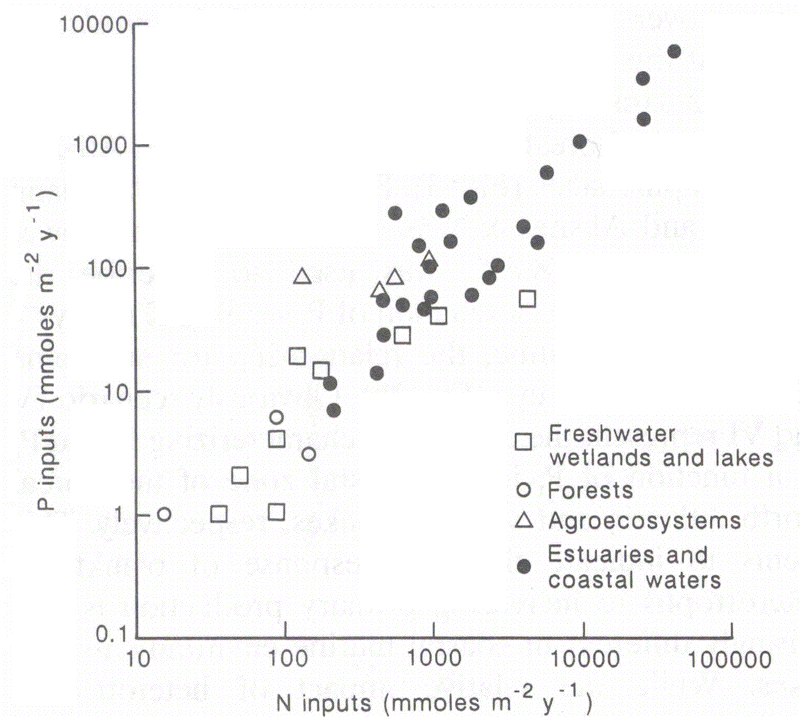


 |  |  | 8.1 Introduction |
The effects of global and local changes are most prominent at the land-sea margins where presently population growth is greatest. For example, the population of coastal counties of the USA has roughly doubled since 1960 [150]. This gives rise to increased pressure on natural resources and a large number of disturbances to coastal regions. Presently, eutrophication of coastal waters is probably the most important environmental effect [171]. The effects of nutrient enrichment thoroughly change coastal ecosystems and occur virtually worldwide. Nutrients move across the land-sea margins at such high rates that coastal waters and estuaries are the most fertilized ecosystems on earth (Figure 1).

The discharge of nutrients to the coastal zone increased strongly during the last centennial. The increase in human population, the use of fertilisers, increased intensity in agriculture, logging and increased atmospheric deposition are the main cause for this intensification. However, significant periods of eutrophication took place much earlier. Already during pre-Roman time significant amounts of the mixed woods in the Mediterranean disappeared. During pre-Viking times natural woods disappeared in Denmark, during the Middle Ages most of the original woods from central and northern Europe. Europe developed into the cultural landscape that we encounter today, unrecognisable and widely different compared to the pristine state. The removal of woods and the introduction of agriculture had a strong impact on the leaching of nutrients all over Europe and periodically eutrophication in the Baltic and North Seas must have been significant over the last 1000 years. Cultural eutrophication, intense as it may be at present, is thus nothing new, but a close and well-known companion of human civilisation, mainly through the introduction of agriculture that paved the road for human development and population explosion.
Coastal ecosystems can accommodate large amounts of nutrients, but there is certainly the danger that increased loading gives rise to increases in suspended biomass, far beyond the range of natural concentrations. For scientists and managers alike the question arises how much nutrient discharge a specific recipient can accommodate per unit time before undesirable consequences occur. Can we determine the primary production rates where excessive biogenic matter is exported to the bottom water and the sediment that result in bottom fauna changes and ultimately anoxia?
 |  |  | 8.1 Introduction |